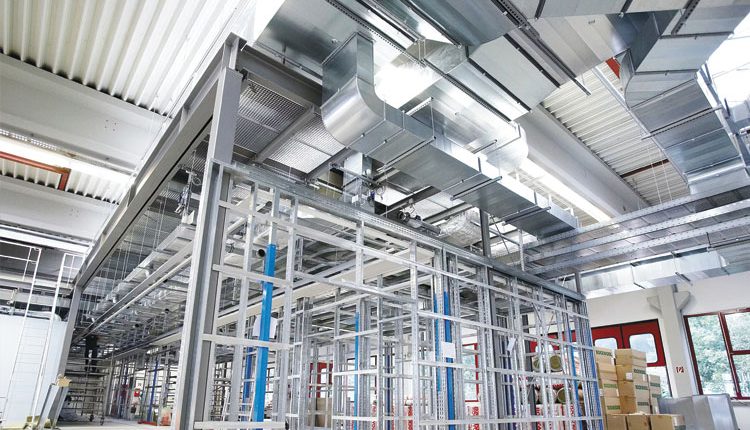Creating an ideal ventilation system for large industrial premises is essential for maintaining a safe and comfortable working environment. Proper ventilation not only ensures the health and well-being of employees but also contributes to the efficiency and productivity of industrial processes. In this article, we will explore the key considerations and best practices for designing an effective ventilation system in large industrial facilities.
Understand the Purpose of Ventilation
Before designing a ventilation system, it’s crucial to identify the specific goals and requirements. Ventilation can serve various purposes in industrial settings, such as:
Worker Health and Comfort:
Ensure a supply of fresh air and removal of pollutants to protect the health and comfort of employees.
Process Ventilation:
Control airborne contaminants generated during industrial processes, such as welding fumes or chemical emissions.
Temperature and Humidity Control:
Maintain suitable temperature and humidity levels for both workers and sensitive equipment.
Dust and Particulate Control:
Remove dust and particulates that may interfere with production processes or pose health risks.
Conduct a Site Assessment
Begin by assessing the layout, size, and nature of the industrial facility. Consider factors like the types of processes, the number of employees, and the location of pollution sources. Identify areas where ventilation is most critical and areas where it may be less necessary.
Determine Ventilation Rates:
Ventilation rates are calculated based on the volume of air required to achieve specific air quality goals. This involves considering factors like the type and concentration of pollutants, occupancy levels, and permissible exposure limits (PELs). The American Conference of Governmental Industrial Hygienists (ACGIH) provides guidelines for determining ventilation rates.
Choose Ventilation Methods
There are two primary methods of ventilation in industrial settings:
Dilution Ventilation:
This method involves supplying a constant flow of fresh air to dilute and disperse pollutants. Dilution ventilation is suitable for facilities with low to moderate contaminant levels.
Local Exhaust Ventilation (LEV):
LEV systems capture pollutants at the source, often through hoods, booths, or enclosures, and then exhaust them to the outside. This method is highly effective for controlling contaminants generated during specific processes.
Select Ventilation Equipment:
Choose appropriate ventilation equipment, including fans, blowers, filters, and ductwork, based on the specific needs of your facility. Ensure that the equipment is sized correctly to meet the required airflow rates.
Implement Control Strategies:
Consider incorporating control strategies like variable air volume (VAV) systems or demand-controlled ventilation (DCV) systems to optimize energy efficiency while maintaining air quality.
Maintenance and Monitoring:
Regularly inspect and maintain the ventilation system to ensure it operates efficiently. Implement monitoring and alarm systems to detect malfunctions or deviations from desired conditions.
Compliance with Regulations:
Ensure that your ventilation system complies with local, state, and federal regulations, including those related to air quality, occupational safety, and environmental protection.
Employee Training:
Educate employees about the importance of proper ventilation and the safe use of ventilation equipment. Encourage them to report any ventilation-related concerns or issues promptly.
Continuous Improvement:
Regularly review and update your ventilation system as industrial processes evolve or as new technologies and best practices emerge.
Conclusion
In conclusion, designing an ideal ventilation system for large industrial premises requires a comprehensive understanding of the facility’s unique needs and compliance with relevant regulations. A well-designed ventilation system not only ensures a safe and healthy work environment but also contributes to operational efficiency and employee well-being.



